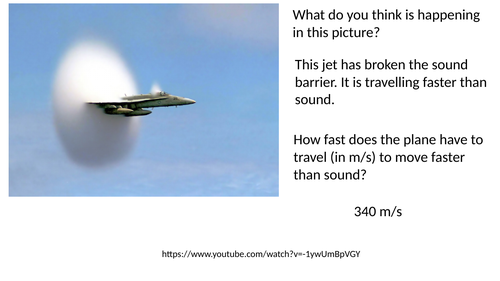
This is the second lesson in a unit of work on sound. This lesson is aimed towards KS3 classes but could easily be adapted for other levels. The main aim of the lesson is to introduce pupils to the speed of sound and explain why the speed of sound is different in solids, liquids and gases.
For a bundle of all five lessons in this unit, click here.
- Part of this lesson requires a vacuum chamber with a sound maker in it to demonstrate sound’s inability to travel through a vacuum. A video has been included as an alternative task to this.
During this lesson pupils will:
- Estimate the speed of sound in air.
- Share their own knowledge of sound during discussion.
- Recap transverse and longitudinal waves and suggest the types of media they can move through.
- Watch vacuum chamber demo to show sound cannot travel through a vacuum.
- Use the particle model of states of matter to explain why sound travels fastest through solids and slowest through gas.
- Make a string telephone and complete analysis of the activity.
- Complete consolidation questions.
- Use the speed equation to calculate the speed of sound in different situations (higher ability.)
Visit my shop for more lessons in this unit and other science, history and geography resources.
Get this resource as part of a bundle and save up to 48%
A bundle is a package of resources grouped together to teach a particular topic, or a series of lessons, in one place.
Something went wrong, please try again later.
This resource hasn't been reviewed yet
To ensure quality for our reviews, only customers who have purchased this resource can review it
Report this resourceto let us know if it violates our terms and conditions.
Our customer service team will review your report and will be in touch.
